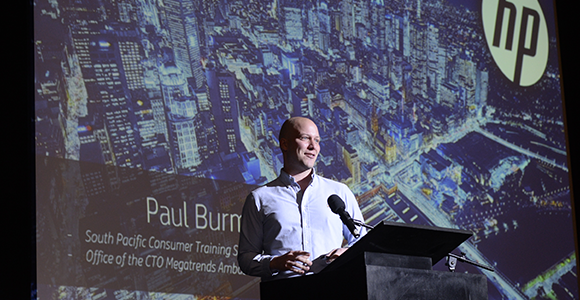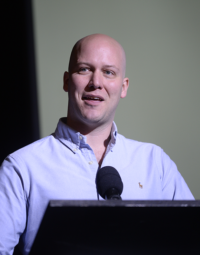The accelerated rate of change with technology is constantly throwing up new challenges and opportunities for business. Paul Burman, Megatrends Ambassador for Hewlett Packard, looks at some major technology trends that might impact Papua New Guinea in the future.
The world has entered a new era, says Paul Burman.
‘We are seeing a rate of change we have never experienced in our species’ history – and it is only going to get faster. When the history books look back at us [they will see] it was us who saw the birth of the internet, which fundamentally changed our world.’
It took 75 years for telephony to reach 50 million users, explains Burman, who spoke at the inaugural Innovation PNG conference in Port Moresby late last year. With radio, the equivalent milestone took 38 years; with television 13 years; with the internet, 14 years; and, with Facebook, 3.5 years. ‘It only took 15 days for Pokemon Go.’
Technology provides an opportunity for less-developed economies to leapfrog the industrial era. ‘In rural China, communities have, in a matter of years, moved from having no electricity and infrastructure to being completely cashless.
‘Cell phones have become one billion times more powerful in 30 years. We have more connected devices than we know what to do with and more data than we have had ever before.’
‘Many parts of Africa, much like PNG, have an electricity problem. Startup energy companies in Africa are leasing small solar kits to homes. The kits are interconnected with your neighbours, crowdsourcing your power.’
The panels charge all batteries in a community and people pay only for only what they use. ‘If your panels are making more energy than you consume, you achieve credits in the form of more electricity to use, or digital currency, or even phone credit. This reduces dependence on central grids (if there even is one) and it is much cheaper and more reliable.’
Burman, who travels the region communicating tech giant Hewlett Packard’s view of the future, adds that each year there are 143,000 new internet startups in emerging economies.
The ‘silver spenders’ are coming
The megatrends ambassador notes global demographics are altering, which will have lasting consequences for business.
‘We are seeing massive shifts. About 1.4 billion people will be over the age of 60 by 2030. Thirty per cent of the workforce will be over 55 by 2030. In 2020, these ‘silver spenders’ will have the buying power of US$15 trillion.’
‘We are moving from a connected world linked to devices without their own intelligence, to a cognitive world where we can share intelligence, we can share learning.’
Changes in technology have been as seminal. Burman notes that there is 50 times more information generated globally in 2020 than there was in 2018. ‘Remember how hard it was to get information on customers? How long it took. How expensive it was? Now, you can just plug in and access that data at any time.
‘Cell phones have become one billion times more powerful in 30 years. We have more connected devices than we know what to do with and more data than we have had ever before.’
The future of AI and education
Another ‘megatrend’, according to Burman, is the emergence of artificial intelligence (AI) – computers that change and adapt their own software rather than just being programmed by humans.
AI robots can provide new types of help to the world’s growing population, he argues.
‘We often talk about AI as humans versus robots; silicon versus carbon. But, in Japan, you can buy a robot dog that cruises around the house and if you need to take medication it will remind you. If you have a fall, then it will notify a family member.
‘Right now, AI is a product, not a utility. But we are moving from a connected world linked to devices without their own intelligence, to a cognitive world where we can share intelligence, we can share learning.’
Another area that will undergo a radical transformation is education.
‘The way we teach kids now is the industrialised way of learning. Humans learn by story telling but then we get to a classroom and we say: “Learn these 500 things and tell them back to me in a test”.’
Education in the future, he said, can instead be customised to a student’s learning style and individual curriculum.










Speak Your Mind